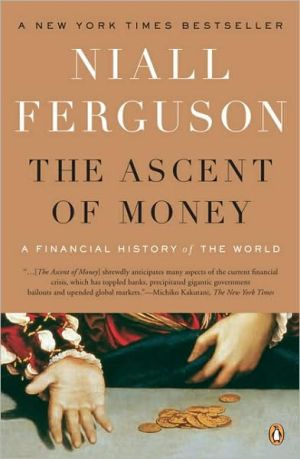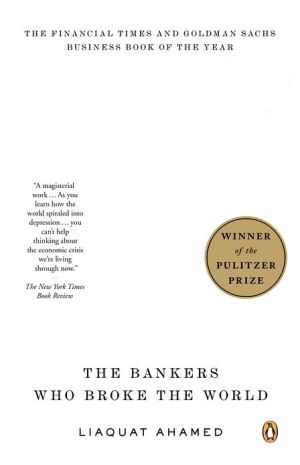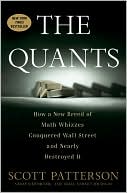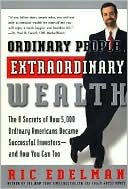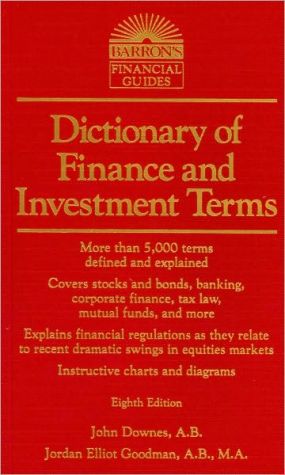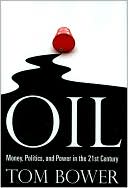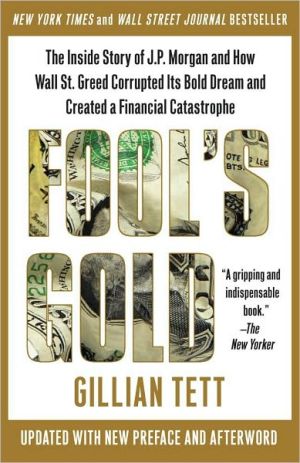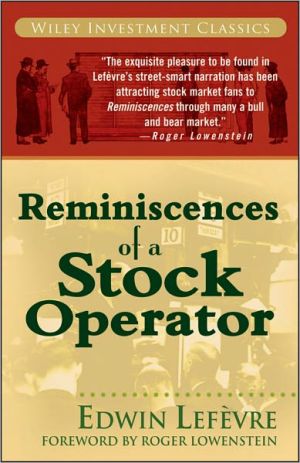The Ascent of Money: A Financial History of the World
"Bread, cash, dosh, dough, loot, lucre, moolah, readies, the wherewithal: Call it what you like, it matters. To Christians, love of it is the root of all evil. To generals, it's the sinews of war. To revolutionaries, it's the chains of labor. But in The Ascent of Money, Niall Ferguson shows that finance is in fact the foundation of human progress. What's more, he reveals financial history as the essential backstory behind all history." "Through Ferguson's expert lens familiar historical...
Search in google:
Niall Ferguson follows the money to tell the human story behind the evolution of finance, from its origins in ancient Mesopotamia to the latest upheavals on what he calls Planet Finance. The Barnes & Noble Review Money, says the song, makes the world go round. It can also threaten to stop it. Thus, a book that explains the origin and growth of money, banks, stock markets, and the exotic growth of the financial instruments and institutions that often bewilder even those who live by them, is a valuable thing. Despite the fact that Niall Ferguson finished writing The Ascent of Money in the late spring of 2008, while the international financial crisis was still gathering momentum, this is a highly relevant book. Not the least of its merits is that Ferguson shows how alert he was to the possibilities for disaster inherent in the loose credit and securitization of bad debt from which so much money was made before the crisis unfolded. His was an alertness made possible by a grasp of history; Ferguson thereby vindicates the utility as well as the beauty of his craft.
Introduction 11 Dreams of Avarice 172 Of Human Bondage 653 Blowing Bubbles 1194 The Return of Risk 1765 Safe as Houses 2306 From Empire to Chimerica 283Afterword: The Descent of Money 341Notes 363List of Illustrations 399Index 403
\ Shelby Coffey IIIThe pleasure of reading Ferguson's treatment comes partly from the clarity of his explanations of financial concepts but mostly from his pen portraits of the extravagantly gifted and flawed characters who have led money's long rise. He shows us how far we have come since Mesopotamian moneylenders developed rudimentary accounting around 1,000 B.C. and the Medici created elements of modern banking in 14th- and 15th-century Florence…an admirably illuminating book that will take its place beside such modern classics as John Train's The Money Masters, Peter L. Bernstein's Against the Gods, and Adam Smith's Supermoney.\ —The Washington Post\ \ \ \ \ Michiko Kakutani…the book as a whole is animated by Mr. Ferguson's narrative gifts, among them his ability to discuss complex ideas in user-friendly terms. He also has a knack for illustrating his larger hypotheses with colorful stories about people like Nathan Rothschild (the subject of one of his earlier books); the Scottish economist and gambler John Law (described as "the man who invented the stock market bubble"); and the Nobel Prize-winning economist Milton Friedman and his so-called Chicago Boys\ —The New York Times\ \ \ Library JournalWith global financial markets experiencing severe turbulence, Harvard historian Ferguson (The Pity of War) presents a timely history of money and finance from the advent of coins to J.P Morgan Chase's takeover of Bear Stearns earlier this year. He describes humanity's major financial innovations such as banks, bonds, joint stock companies, insurance, and property ownership as well as the pitfalls of inflation, recessions, and asset bubbles. Ferguson finishes by discussing the various iterations of globalization over the past 100 years and one of the newest and currently most notorious financial developments: hedge funds. He keeps his story interesting with humor and unexpected twists such as how a fund to provide for the widows of Scottish clergymen laid the foundations for modern insurance theory. Commenting on the safety normally ascribed to investing in property, he observes ironically that the only real security entailed is for lenders who in the event of loan defaults can seize properties. Though not comprehensive in scope, Ferguson's lighthearted but thoughtful stroll through financial history is a welcome and recommended addition for public libraries and undergraduate collections. [See Prepub Alert, LJ7/08.]\ —Lawrence Maxted\ \ \ \ \ \ From the Publisher"There is an ease to [Ferguson's] prose that leaves this complicated subject interesting to and approachable by any general [listener]." —-Booklist\ \ \ \ \ The Barnes & Noble ReviewMoney, says the song, makes the world go round. It can also threaten to stop it. Thus, a book that explains the origin and growth of money, banks, stock markets, and the exotic growth of the financial instruments and institutions that often bewilder even those who live by them, is a valuable thing. Despite the fact that Niall Ferguson finished writing The Ascent of Money in the late spring of 2008, while the international financial crisis was still gathering momentum, this is a highly relevant book. Not the least of its merits is that Ferguson shows how alert he was to the possibilities for disaster inherent in the loose credit and securitization of bad debt from which so much money was made before the crisis unfolded. His was an alertness made possible by a grasp of history; Ferguson thereby vindicates the utility as well as the beauty of his craft. \ The story, a fascinating one, covers 4,000 years. Money is the concrete expression of the relationship between lenders and borrowers -- it is the embodiment of debt made tradeable -- and it gave rise to banks, which in turn gave a vast boost to the development of credit. From medieval times to the present, the Darwinian evolution (as Ferguson convincingly characterizes it) of money and markets proceeded at an increasing pace and sophistication. Bonds came first, from the 13th century onward securitizing revenue from interest. The 17th-century Dutch invented equity in corporations in the form of shares carrying limited liability. In the 17th and 18th centuries, economies of scale and an understanding of mathematical probability yielded protection against risk in the form of insurance and pension funds. The 19th century saw the rise of the first derivatives in the form of options and futures. In the20th century individuals were encouraged to redirect their portfolios toward real estate, accepting the need for greatly increased leverage to do so.\ Ferguson points out that the economies where all these things happened -- that is, the property-owning democracies with banks, bonds and stock markets, and insurance cover -- have consistently performed better than other economies. Or rather: at least until now. But in the last couple of decades there has been a "Cambrian explosion" of new types of financial services and assets and a seemingly boundless appetite for asset-backed securities, not least mortgages. Perhaps the long roots of this lay in the collapse of the Bretton Woods control of capital movements in the early 1970s, following which the globalization of financial dealings has mushroomed, aided by substantial deregulation in the 1990s and since. The result has been a huge bubble, the pricking of which we are now witnessing.\ In fact there have been scores of periodic financial crises in recent history, as Ferguson shows, illustrating the inherent volatility of the financial markets, in which greed and -- when greed has over-gorged itself -- fear are the principal sentiments. One thing Ferguson's book emphatically shows is that the new concept of "behavioral economics" provides a far better description of what happens in the markets than any of the theories previously mooted, including the fancy mathematical models that were supposed to make investment foolproof. These latter depended upon the markets being rational and predictable; history shows that matters are otherwise.\ There is a good deal of riveting information here about the buildup to the current crisis, in discussions of the Enron scandal, the way speculators such as George Soros make their money, the unparalleled mushrooming of securitized debt obligations that -- because so many of them are of such poor quality -- has rocked previously secure banks to their foundations around the world. Ferguson describes what went wrong with Long Term Capital Management, the once-so-successful investment company that failed despite the intricacy of its model and spread of its assets. Because, Ferguson points out, its managers knew too little history, they learned the hard way John Maynard Keynes's insight that in times of crisis, "markets can remain irrational longer than you can remain solvent."\ Not only is there much that is instructive and illuminating in Ferguson's account, there is much that is absorbing. Until you begin reading you might not imagine how engrossing a book about the history of money and finance can be. The story of money's origins, of the Italian Renaissance cities, of the founding and operation of the first limited liability company in the Netherlands, of the Rothschild banking dynasty's rise in the 19th century, of what caused the Great Depression, of the turn to house-owning debt, of today's massive and perhaps unhealthy symbiosis between borrowing America and lending, cheaply manufacturing China to make "Chimerica" with most of the world's money and population in it, make an altogether gripping tale. --A. C. Grayling\ A. C. Grayling is an author, playwright, reviewer, cultural journalist, and professor of philosophy at London University. Among his many books are Towards the Light of Liberty and The Choice of Hercules. His play Grace was recently performed in New York City.\ \ \
